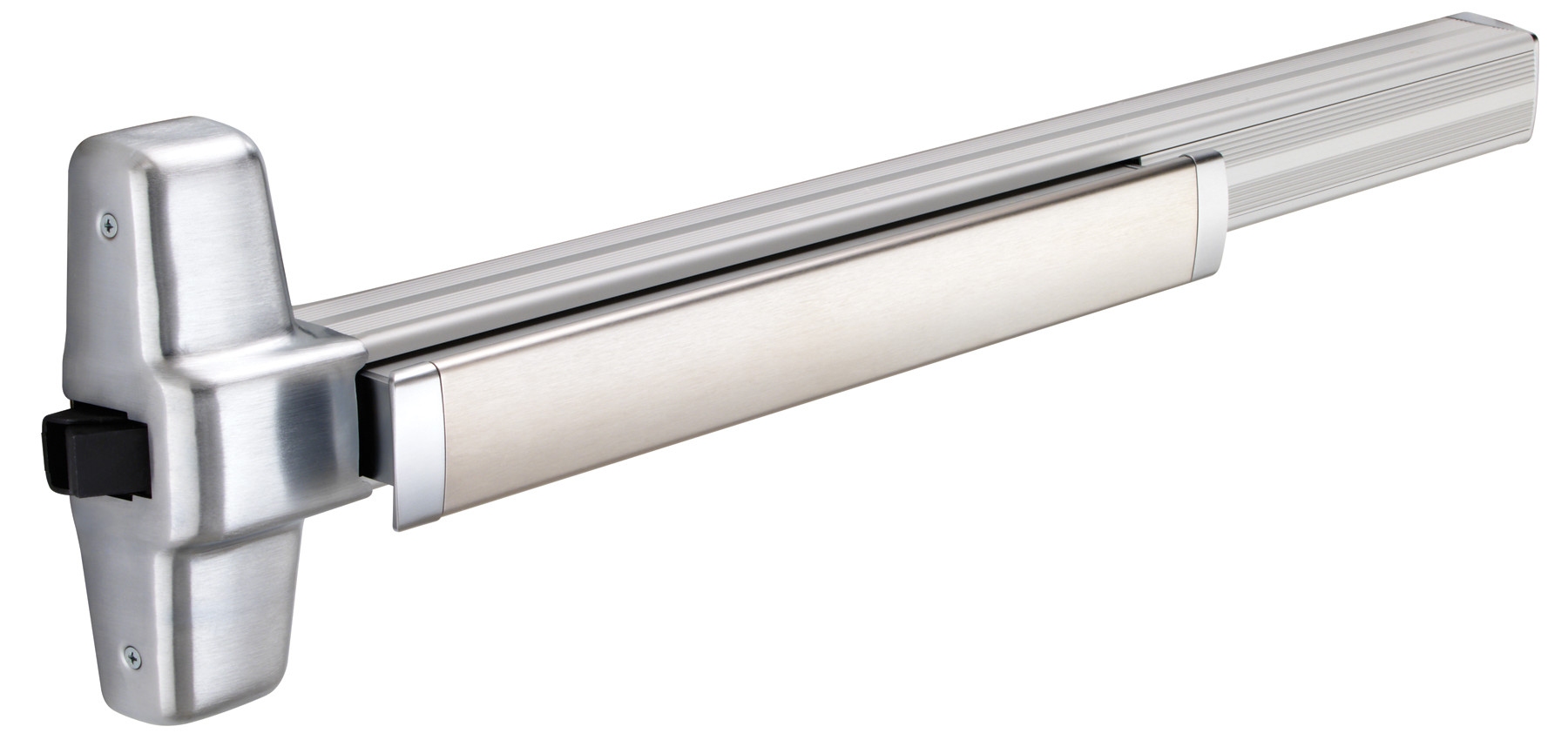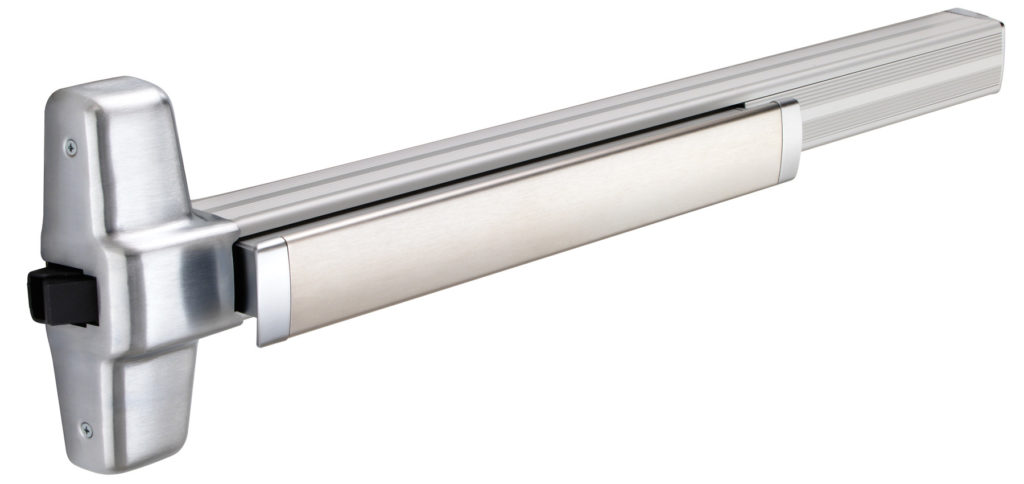I’ve received this question 3 times in the last month…
Is a door with panic hardware required to have a door closer?
Sometimes the question comes up because of the maneuvering clearance requirements for a door with both a latch and a closer – omit one of the two and the required size of the maneuvering clearance changes. There may be other reasons someone would want to omit the closer, but it just seems like a bad idea to me.
If the door isn’t fire-rated, there is nothing in the codes or standards that would mandate a closer, but in my opinion the door won’t function properly without one. We subconsciously apply more force when pushing on a door with panic hardware. The door could be slammed open and may bounce back and possibly hurt someone during either the opening or closing cycle.
Have you ever run across this application in the field or been asked to specify or install panic hardware on a door with no closer? What is your response to this request?
WWYD?
You need to login or register to bookmark/favorite this content.







I have a customer I do a lot of design-build work for and they ask for this somewhat regularly (along with a number of other applications I hate). I explain why I think it’s a bad idea and they generally come around. Sometimes they don’t, and if it’s not a fire-rated opening there’s nothing you can do. If they don’t want to buy a closer and it isn’t *required* you can’t force them to buy one.
I have seen it on remote doors in the rear of a warehouse where the door is there for emergency exit but is rarely used – But I feel it should still have a closer.
The answer is NO!
I usually tell them it is a bad idea and let them decide. Really don’t want to alienate a customer or an Architect.
Same thing I tell people who have “access control” on a door without a closer…..
Codes and standards aside when a bad idea shows itself it’s a bad idea I would never put a panic bar / exit device on a door without some type of back pressure
Three different schools that I have installed the hardware in over the last fifteen years have had openings with exit devices and no closers. I got closers added through change orders, using the reasoning that the lack of grasping points with most exit devices created a safety issue due to the lack of door control afforded by a closer.
as an inspector, if there is no requirement for a closure I see installing it with push hardware as an option under exiting. However, the energy code my drive you to have a closure to preserve the loss of AC or heat energy
I saw this on a job once and specifically asked them if this is intended and that closers would be preferable and they wanted to leave them without closers. this was in a school so i suspect after a few months they will be asking for one.
I have specified the LCN 4110 series with a special template that eliminates the springs from the closer, this still provides door control in the opening and closing cycle. Think large (50 or more peeps)classrooms.
I don’t remember ever being asked to do it myself but I see this often times at stores that have several exit doors on the perimeter. Usually it’s at least accompanied by a crash stop.
We won’t install panic hardware without a closer. In our case it is a school environment and the potential for injury is just too high when one of the little angels drop-kicks the door open and the poor kid outside gets whacked like a foul ball. This goes double for exterior doors where wind plays a factor as well. Never mind exterior and wind, HVAC can get uncontrolled doors slamming too!
We have been using more and more CUSH arms on closers to try to prolong the life of doors and closer arms.
Was more common to see years ago. Not common these days. Most always would only find doors without closers on exterior building doors that were not fire-rated doors. Have also seen doors like this installed adjacent to revolving doors where the side hinged doors are normally secured and only used during an emergency.
Maybe not specifically related to this application, but there are tens of thousands of interior and exterior horizontal sliding doors equipped with panic hardware to release the break-away function. None of these are equipped with any type of closer. When released, those that don’t jam/bind on another panel or drag on the floor can also experience significant rebound, sometimes even worse, due to their size and weight.
That’s a good point, Larry!
– Lori
The logical solution would be to allow a door with a latch and a delayed-action closer the same design flexibility as one with a latch and no closer. If that is not possible, I wonder if it might be possible to adapt a closer so it functions as a pneumatic check but doesn’t close the door.
If I had a customer with lever handles on their back doors of an industrial building or warehouse without door closers I wouldn’t be alarmed. If said customer wanted to increase security I will often recommend a panic device, not for its life safety element, but because it offers greater security, especially in steel buildings as the latch is not exposed like a standard latch. I wouldn’t mandate a closer but perhaps suggest it. Some buildings may not have air conditioning in these areas and it is not uncommon that the door are propped during business hours.